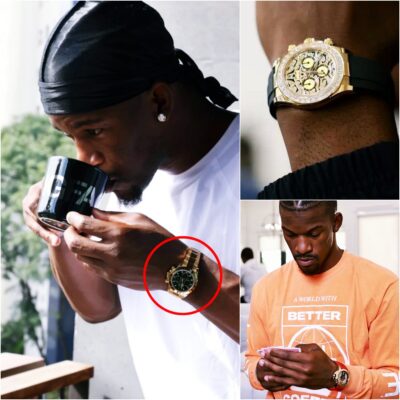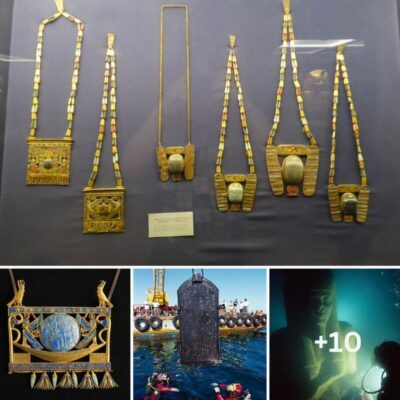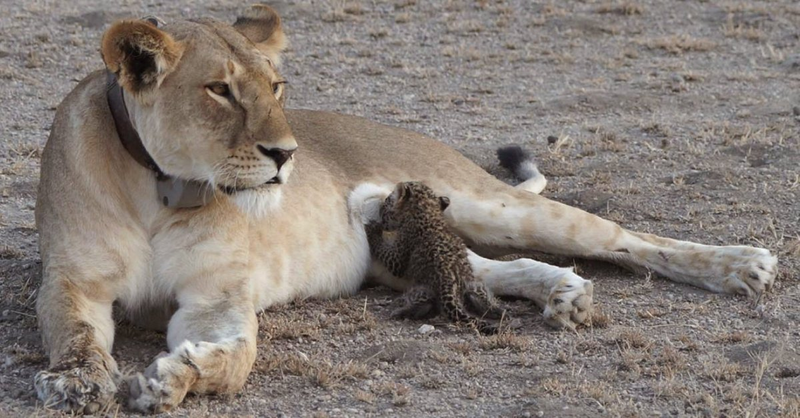
The pictures were taken by a guest at a lodge in the Ngorongoro Conservation Area, a United Nations World Heritage Site, in 2017. (Since then, another case of a lioness raising a leopard cub has been observed, you can read below)
Ingela Jansson, the head of conservation group KopeLion, told The Associated Press that the lactating lion may have lost her cubs and was ready to feed the female leopard. Meanwhile, the leopard seems to have lost its mother.
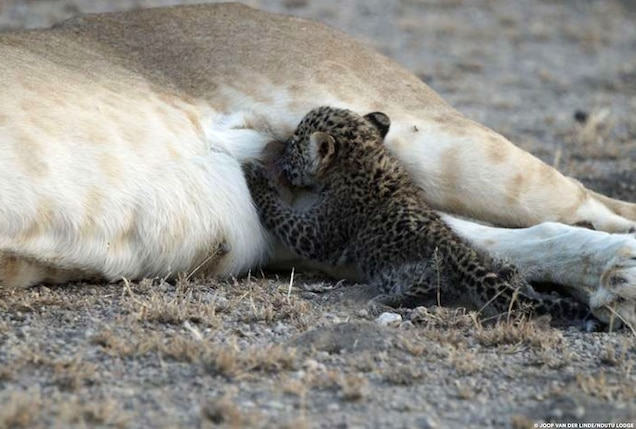
“It is very unusual to observe something like this,” commented Jansson, jokingly describing the special case of rearing hybrids as a case of “supermarket confusion” in which lion “picked up a kid by mistake”.
Feral cats and other animals of the same species have been known to occasionally adopt and suckle offspring that are not their own, and some birds have also been observed feeding chicks of other species whose eggs are inadvertently laid in their nests. But this type of cross-breeding is scarce for feral cats, according to a statement from Panthera, a New York-based feral cat conservation group.

“It’s really mysterious,” Luke Hunter, Panthera’s president and chief conservation officer, said of the new images back then. According to him, it was unclear if the leopard’s mother was still around and could take the cubs from “the lioness daycare”, which would be the best possible outcome.
However, Hunter warns that “natural odds are stacked against this little fellow,” which could have been ki.l.led by other lions realizing it wasn’t theirs. He added that even under normal circumstances, only 40% of lion cubs in the area, part of the Serengeti ecosystem, survive their first year.
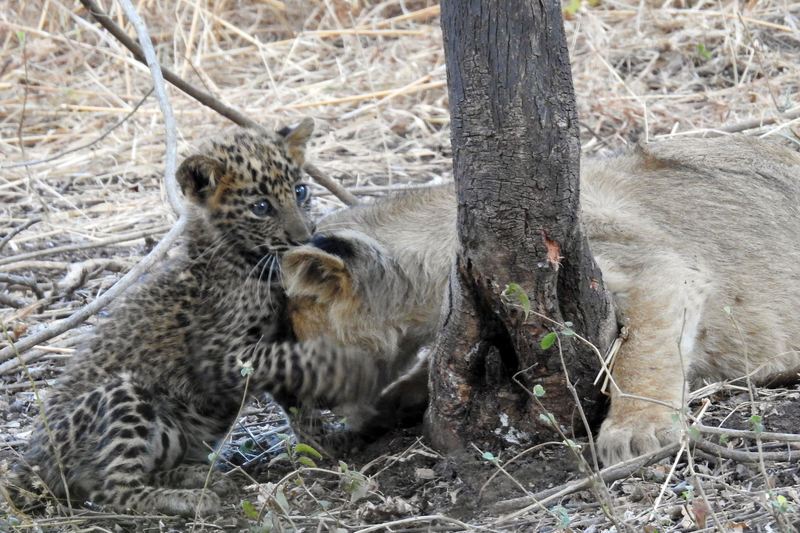
And indeed, the lion was seen hanging out with other lions the next day, but without any cubs around.
This is the only time a lioness has been seen feeding a leopard, or in fact, any kind of cub that isn’t a lion, until last year, an even more astonishing find was made in Gir National Park in Gujarat, India, where a lioness adopted… Well, another leopard. In this case, however, the unusual relationship lasted much longer, according to the New York Times.
The cub was about 2 months old, had fuzzy ears and blue eyes – a cute little boy. The lioness spent weeks nursing and feeding him, treating him as if it were one of her two sons, who are the same age. However, despite all the care, the young leopard di.e.d a few weeks later.
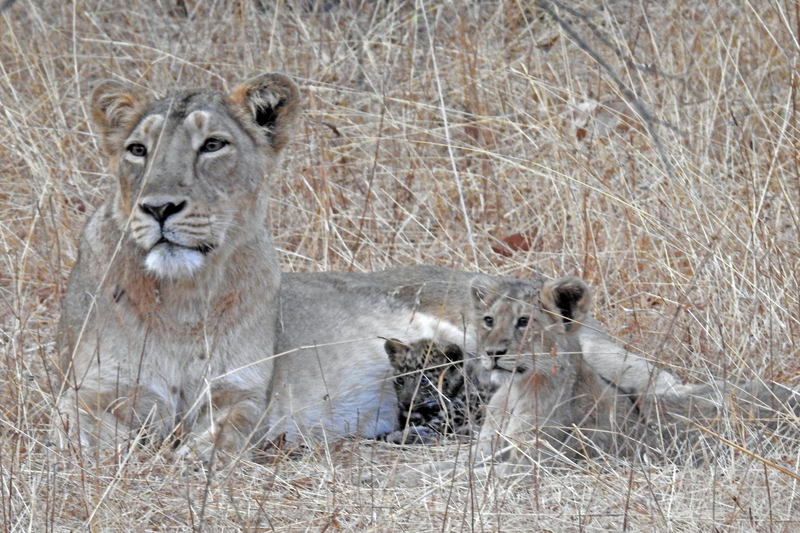
A lioness with her pet leopard and her biological son in Gir National Park in Gujarat, India. Photo: Dheeraj Mittal
What makes the unusual find even more interesting is that lions and leopards in Gir National Park often don’t get along. At all.
“They compete with each other for space and food,” said Stotra Chakrabarti, a postdoctoral researcher at the University of Minnesota who studies animal behaviour. “They’re always against each other.”
Dr Chakrabarti and others detailed the case in the ecological journal Ecosphere. His fellow authors include a conservation officer and a ranger who first spotted the unusual family in late December 2018, hanging out near a recently killed nilgai antelope.
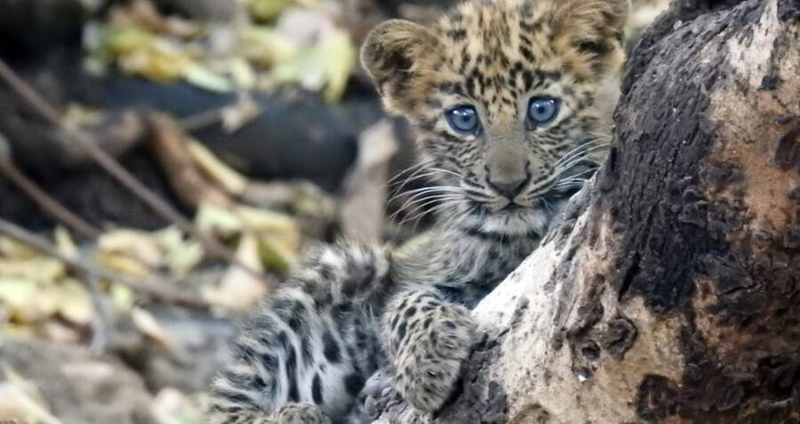
For the next six weeks, the team tracked the mother lion, her two cubs, and leopards roaming Gir National Park. Dr Chakrabarti said: ‘The lioness took care of it like one of her own.
The spotty little fellow’s new siblings were similarly welcoming, playing with their new friend and occasionally following him up the trees. One photo shows the leopard pounce on the head of one of his adoptive brothers, who is almost twice his size and is clearly a good sport. Dr Chakrabarti said: ‘It looked like two big cubs and a tiny puppy in the litter.
Dr Chakrabarti, who has been studying Gir’s lions for almost seven years, said, “this is definitely the most ‘wonderful’ moment I’ve experienced. His fellow researchers with the Asiatic Lion Conservation Project in India, some of whom have been tracking big cats for decades, “haven’t seen anything like this either,” he pointed out.
Unlike their African counterparts, Asiatic lions live in small, sex-separated groups, whereby lionesses often separate from the rest of the pride for several months after giving 𝐛𝐢𝐫𝐭𝐡 and raise their cubs on their own. Dr Chakrabarti noted that if the makeshift family had interacted more with other adult lions, the leopard might have been identified as the impostor.
But they never saw what would happen in such a situation, because after about six weeks, the researchers found the leopard’s cub’s d.e.ad body near a watering hole. A field dissection was made, showing that he most likely died from a femoral hernia he had since 𝐛𝐢𝐫𝐭𝐡.
Dr Chakrabarti said: ‘It’s amazing to see, when the leopard cub grew up, how things would be. “But it didn’t happen.”

